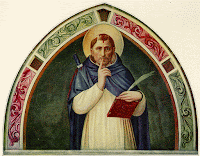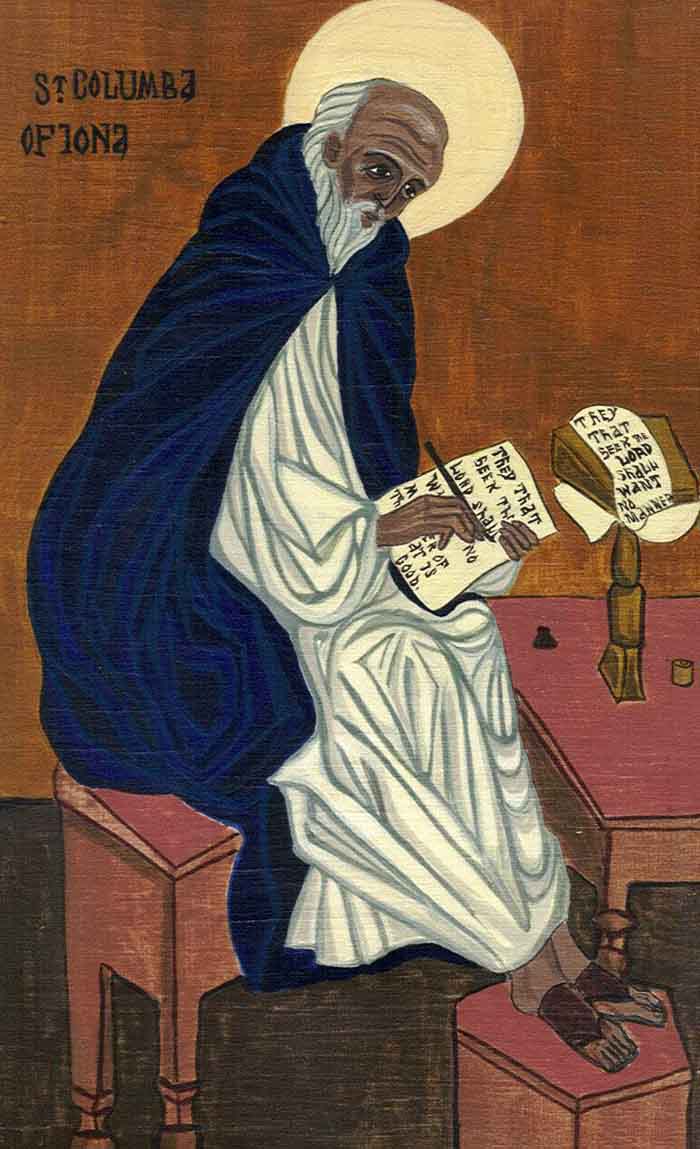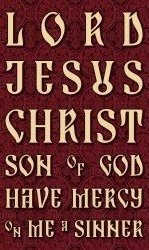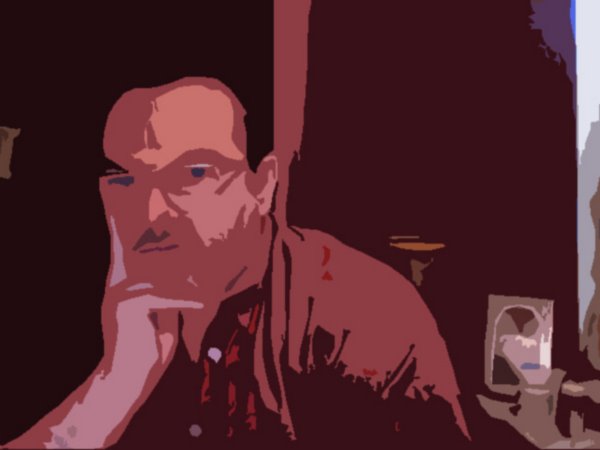After some unfortunate and awkward statements by English Catholics who do not grasp the Apostolic importance of Anglicanorum coetibus, the Revd Anthony Reader-Moore, SSC provided an excellent response to one such lamentable letter, printed recently in Britain's Catholic Herald, and which I quote at length below:
Anglo-Catholics do have a real patrimony
Anthony Reader-Moore responds to Catholics who suggest that Anglicans considering the Pope’s offer have no true tradition of their own
It is right that there should be vigorous debate concerning the new Apostolic Constitution for Anglicans and what comprises their patrimony, but the letter by Robert Ian Williams in the November 27 issue, for all its apparent erudition, was not helpful and ought not to go unchallenged.Indeed, it presented a narrow and somewhat jaundiced approach, hardly calculated to encourage a greater understanding of Anglican history among cradle Catholics, nor to assure Church of England clergy and laity who are seriously considering taking this course that they will indeed be welcome in the English Catholic Church.
It can be fairly argued that the “Anglican patrimony” is much greater than either Thomas Cranmer or the various versions of the Book of Common Prayer, integral as they are to Anglicanism both here and overseas. Thomas Cranmer’s Protestantism was mainly a personal matter acquired over a number of years prior to the publication of the First Prayer Book in 1549, largely as a result of theological exploration and his contacts with a number of continental reformers such as Martin Bucer and Philipp Melancthon. It more or less remained so prior to the death of Henry VIII. After that, with the accession of a child king greatly influenced by his Seymour relatives in a Protestant direction, Cranmer had an unparalleled opportunity to introduce what had been a private matter into the public realm of ecclesiastical and political affairs.
This suited not only the personal predilections of Protector Somerset, but more especially his political strategy and so became the official religious and political policy of the regime. If it was a matter for the ruling elite, it was hardly one for many of the bishops, most of the clergy and still less so for the bulk of the ordinary people, who remained staunchly Catholic in outlook and devotion. The English Reformation was always fundamentally about power rather than religious belief, the latter being seen as a convenient vehicle through which to impose changes as much sociological as they were concerned with faith.
Indeed, Cranmer’s First Prayer Book of 1549 was essentially a conservative reform and it is wrong to suggest that at this point he got rid of such things as the Benedictus and Agnus Dei from the liturgy. The Eucharistic rite was of traditional shape and order and still called “the Mass”, much of the traditional ceremonial being retained. Stephen Gardiner, Bishop of Winchester and a reactionary and opponent of Cranmer who later on was to be Mary I’s lord chancellor, accepted that it was fully patient of a Catholic interpretation. It was only with the imposition of the Second Prayer Book in 1552 that the regime felt able to bring in a more thorough going and radical change, but this lasted less than a year and it is questionable whether it was adopted much beyond the environs of London and the Home Counties prior to the death of Edward VI in the spring of 1553. Indeed, there is some evidence that upon her accession Elizabeth I would have preferred to have reinstated the 1549 Book rather than the compromise version that was actually adopted.
The position of the Church of England has always been that despite the many and various changes introduced into the religious life of this country during the upheavals of the 16th century – and no European state was not affected in some way or other by this – and notwithstanding the break with Rome, Henry VIII did not found a new church as such, but rather wrested from the papacy final control of all matters ecclesiastical within his kingdom. Thus Ecclesia Anglicana has always claimed to be the authentic manifestation of the One Holy Catholic Church in this land, the historic church of the English nation, maintaining continuity with the primitive Church of the early Christian centuries. Unlike some of the established churches of northern Europe, mainly of the Lutheran tradition, historically she has understood herself to be an integral, if lamentably separated, part of the Latin Church of the West. Because of this, there is an deep-seated consciousness of sharing a vast amount in common with the Roman Communion, from which indeed she sprang. So in this respect is is right to suggest that “there is nothing authentically Anglican about the ritual”. The nearest one could get to something “Anglican” as such might be the medieval Sarum Use, but even that was a version of the Roman. However, when he then asserts that the use of vestments and other liturgical practices were an wholesale appropriation by 19th-century ritualists, he is being at best misleading and at worst utterly wrong.
At the beginning of the 1662 Book of Common Prayer (still the official liturgy of the Church of England in spite of the Alternative Service Book 1980 and, more recently, Common Worship) is what is known as the “Ornaments Rubric”. Here it states unequivocally that the chancels of churches are to remain as they were “in times past” and “such ornaments of the church and of the Ministers thereof, at all times of their ministration, shall be retained and be in use as were in this Church of England, by the authority of Parliament, in the second year of the reign of King Edward the Sixth”.
That, of course, was 1549, the year in which the First Prayer Book was promulgated and in which latter is set out in some detail what vesture is to be used in divine worship, including both the chasuble and the cope. So it is quite wrong to say that such things were reintroduced by the Tractarians and their immediate followers “illegally” during the 19th century. What they saw themselves as doing was returning the Church of England to a strict legal integrity by the use of the lawfully required ornaments and fostering a renewed understanding of her essential Catholicity through matters of worship and spirituality.
Indeed, a sense of the latter, even if muted, had never been entirely lost and is found in the writings of such figures as Bishop Andrewes, John Donne, George Herbert, William Laud and many of the later Caroline divines. The spark of Catholic belief and devotion, albeit in an austere and restrained manner, continued to be fostered by some of the Non-Jurors in the 18th century and is an integral part of the wider Anglican patrimony which Catholic Anglicans would bring with them into any future Ordinariate.
The Catholic Revival has had an incalculable effect on the life and worship of the average English parish, far more so than any other comparable movement either before or since. This is witnessed by the interior furnishings and decorations of the vast majority of our parish churches, even those of an Evangelical hue, and such transformation is a direct result of what Anglican Catholics were doing from the latter half of 19th century onwards. One has only to compare and contrast with what was normative in the time, say, of Jane Austen to see how profound and far-reaching this influence has been and how much a more objective understanding of the “beauty of holiness” has resulted.
Yet this was essentially the outward expression of a profoundly Catholic ecclesiology and spirituality which led to an increased desire on the part of many in the Church of England, by no means confined only to Anglo-Catholics, to explore the possibility of some kind of corporate re-union with the Holy See. The Malines Conversations in the Twenties leading, eventually to the visits of successive archbishops of Canterbury to various popes, resulting in the setting up of ARCIC and the historic visit of Pope John Paul II to Canterbury in 1982, are all evidence of a burning desire that our two churches should be one again. Thirty years ago that vision was such that it looked capable of some kind of accomplishment. The tragedy is that, through the increasing adoption by the official Church of England of an uncompromising liberal and feminist agenda, this has been largely thrown away: corporate re-union at this level seems further away than ever.
Pope Benedict has shown huge understanding and compassion for traditionalist Anglicans and knows where they are coming from. His initiative is one of incredible generosity and vision and helps in no small measure to redeem some of the bitter disappointment and despair that the events of the last few years have caused people like myself to feel. It allows us to hope again; not least that what we have grown up with and loved, many of us from birth, is still valued and wanted – and where it really counts too – at the very heart of the Catholic Church.
The Rev Anthony Reader-Moore SSC is honorary assistant priest of St Mary’s, Wellingborough, Northamptonshire, and chairman of Peterborough Forward in Faith
+Laus Deo!

















